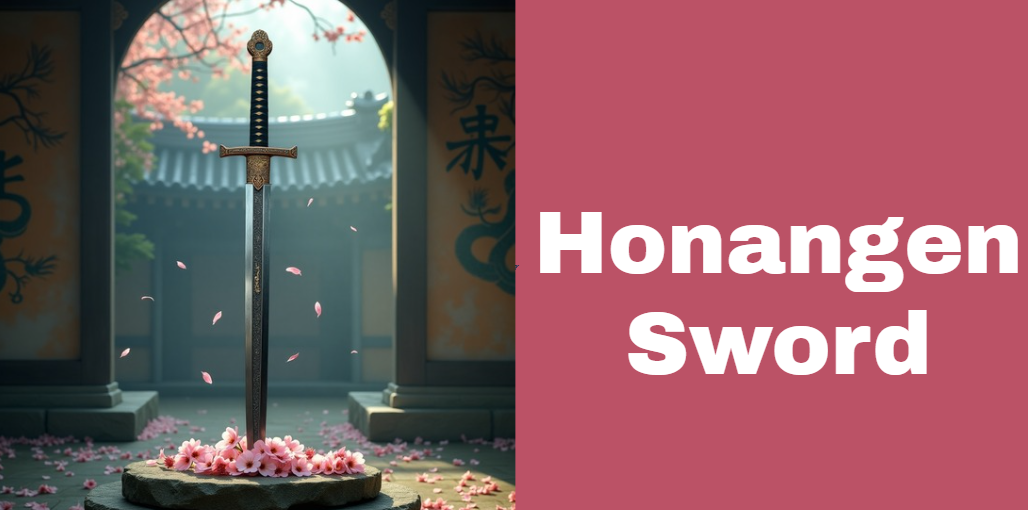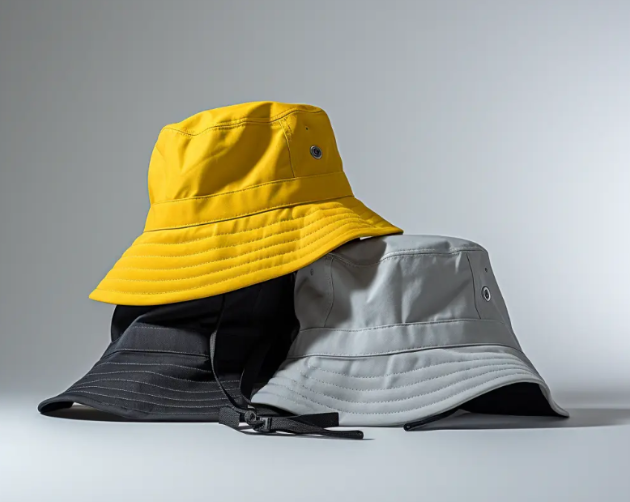Honangen Sword: History, Design, Symbolism, and Legacy Explained
The Honangen Sword stands as a symbol of legendary craftsmanship and deep cultural heritage. Blending historical elegance with battle-ready functionality, this sword has fascinated historians, collectors, and martial artists alike. Whether viewed through the lens of tradition or technical design, the Honangen Sword remains a remarkable artifact with stories etched into its blade.
This guide explores every dimension of the Honangen Sword—its origins, materials, design, use, and symbolic meaning—presented in a straightforward and engaging manner for readers of all backgrounds.
Origins & Historical Context
The true historical origin of the Honangen Sword is a blend of mystery and myth. Some accounts trace it back to feudal Japan, where it was believed to be forged by master swordsmiths using tamahagane steel. Others suggest European roots, where the sword was carried by knights in medieval courts.
In Japan, during the Edo period, the Honangen Sword was often associated with samurai nobles and spiritual guardianship. It was not merely a weapon but also an emblem of one’s status and inner discipline. In contrast, European versions (if any existed) might have been used by elite warriors during formal ceremonies and in actual battlefields during the late medieval period.
Despite the geographic debate, all references to the Honangen Sword share common themes—honor, precision, and an aura of rarity that makes it a coveted item in both historical records and fictional storytelling.
Design & Physical Characteristics
The Honangen Sword is distinguished by its blend of beauty and lethality. Crafted with meticulous attention to detail, its design reflects the culture and function for which it was made.
Typically, the sword measures between 75 to 110 cm in total length. The blade is often double-edged, straight or subtly curved depending on its regional origin, with a keen point ideal for both slashing and thrusting. One of its most striking features is the presence of a fuller—a groove running along the blade to reduce weight without compromising strength.
The hilt of the Honangen Sword is equally noteworthy. It features an ornate crossguard or tsuba (in Japanese variants), designed not only for hand protection but also to reflect the swordsmith’s artistry. The handle, or tsuka, is usually wrapped with silk or leather strips over rayskin, providing both comfort and a non-slip grip.
Key Specifications Table
| Feature | Description |
|---|---|
| Blade Length | 60–80 cm |
| Total Length | 75–110 cm |
| Blade Type | Double-edged, straight or slightly curved |
| Material | Tamahagane (Japan) / High-carbon steel (Europe) |
| Guard | Circular tsuba (Japan) or cruciform (Europe) |
| Handle | Rayskin-wrapped with silk or leather |
| Scabbard | Lacquered wood with ornamentation |
Materials & Forging Techniques
The Honangen Sword’s quality is rooted in the remarkable materials and age-old forging techniques used in its construction. Japanese versions were commonly forged using tamahagane steel—a high-quality steel made from iron sand and smelted in a traditional tatara furnace.
Once the steel was refined, swordsmiths would fold it multiple times to purify the metal and enhance its structural integrity. This folding process also created the beautiful grain pattern known as hada on the blade’s surface. Differential hardening was another crucial step: the spine was made softer for flexibility, while the edge was hardened for sharpness.
Polishing the Honangen Sword required exceptional skill. Polishing stones of various grades were used over days or even weeks, not just to sharpen but to enhance the visual appeal. The result was a flawless, mirror-like finish that highlighted the hamon—the temper line that appeared as a visual trace of the differential heat treatment.
Function & Combat Use
Beyond its visual grandeur, the Honangen Sword was engineered for combat. It was not a ceremonial showpiece alone but a balanced weapon optimized for real-world engagement.
Its double-edged blade allowed for multi-directional strikes, and its weight distribution made it responsive in the hands of a skilled swordsman. In Japanese martial arts like Kenjutsu, swords of this kind were employed for both slashing and stabbing maneuvers. Meanwhile, in speculative European contexts, similar swords were likely used for precision thrusts against armor gaps.
The guard or tsuba served both functional and aesthetic roles. In battle, it prevented the hand from sliding onto the blade and could also be used in close-quarters combat to strike or parry.
Cultural & Symbolic Significance
The Honangen Sword carries a depth of symbolism far beyond its metal. In many traditions, it represented the virtues of honor, bravery, and spiritual purity.
Among the Japanese elite, owning such a sword signified more than wealth—it marked one’s alignment with Bushido, the way of the warrior. The sword was sometimes enshrined and used in religious ceremonies to invoke protection or signal transitions in rank.
Literature and folklore across cultures have also romanticized the Honangen Sword. It appears as a relic imbued with supernatural power or as the decisive tool in fabled duels. These stories further cement its legendary status and continue to influence modern depictions in movies, anime, and fantasy novels.
Evolution & Variations
The Honangen Sword evolved over time as fighting styles, armor technology, and cultural preferences shifted. Early versions were likely heavier and emphasized cutting power. Later designs became more refined, allowing for quicker strikes and improved thrusting capability.
In Japan, variations emerged in blade curvature, hamon patterns, and decorative fittings. In Europe, swords that resembled the Honangen Sword may have featured fuller grooves, broader blades, and different pommel designs.
Evolution Overview Table
| Period | Key Changes |
|---|---|
| Early Designs | Heavier blades, focused on slashing |
| Mid Evolution | Lighter, balanced for slashing and thrusting |
| Later Period | Ornate, thinner profiles with aesthetic focus |
Modern Legacy & Reproductions
In today’s world, the Honangen Sword enjoys renewed interest from collectors, historians, martial artists, and cosplay enthusiasts. While authentic historical examples are rare and held mostly in museum collections, modern replicas are crafted by skilled artisans who follow traditional forging methods.
These reproductions are often used in martial arts training, particularly in Kenjutsu and HEMA (Historical European Martial Arts). They are also featured in exhibitions, film productions, and private collections.
Several swordsmiths today offer custom Honangen Swords, using high-carbon steel or tamahagane to echo the original techniques. The attention to detail in these modern blades often rivals that of historical artifacts.
Care & Preservation
Maintaining a Honangen Sword—whether antique or replica—requires careful preservation. Exposure to moisture, dust, or oils from human skin can corrode the blade over time.
Owners should regularly clean the sword with soft cloths, apply light oil to prevent rusting, and store it in a dry environment. Traditional Japanese maintenance kits include uchiko (powdered stone), choji oil, and rice paper for cleaning.
Restoration of damaged swords should be entrusted to professionals, especially if the piece holds historical or sentimental value.
Notable Examples & Cases
Some of the most esteemed Honangen Swords are housed in museums or held in private collections. While specific historical swords under this name are rare or disputed, their replicas and inspired designs have made appearances in famous media franchises and fantasy worlds.
In recent years, collectors have showcased custom-made Honangen Swords at martial arts expos, historical reenactments, and even online auctions, fetching high prices for their craftsmanship and uniqueness.
FAQs
What exactly defines a Honangen Sword?
It’s a finely crafted blade known for its double-edge, cultural depth, and superior steelwork—combining beauty and function.
Are originals still around?
Genuine historical examples are extremely rare and are usually found in museums or prestigious collections.
How is it different from a katana or longsword?
The Honangen Sword blends characteristics of both—a curved or straight blade with double edges and unique ceremonial value.
Can I buy a replica today?
Yes, modern swordsmiths offer handcrafted replicas for collectors, martial artists, and cultural enthusiasts.
Conclusion
The Honangen Sword remains an enduring icon of martial tradition, refined aesthetics, and cultural pride. From its mysterious origins to its role in modern storytelling, it continues to capture the imagination of those who appreciate the art of the sword. Whether you’re a historian, a martial artist, or simply curious, the legacy of the Honangen Sword offers a profound glimpse into humanity’s reverence for craftsmanship, courage, and heritage.
Additional Posts
AWT69X: A Comprehensive Guide to Smart Technology Evolution
Complete Guide to the 5W USB-C Rapido Caricatore 15509: Features, Performance & User Experience
DL3654-6-10 Compatible Alternators: Complete Guide for Vehicle Owners





